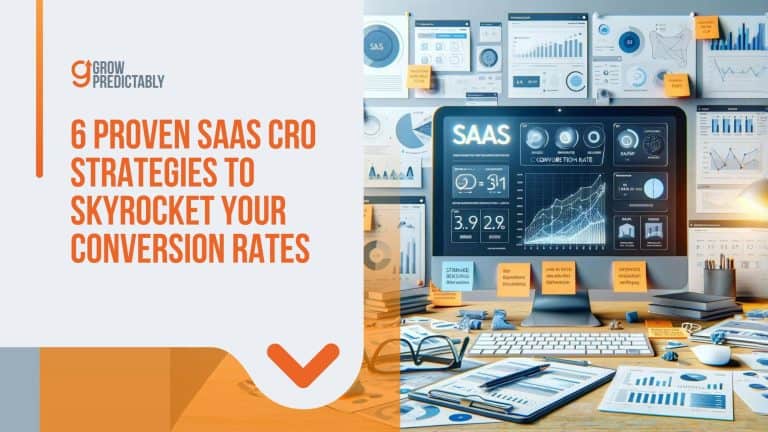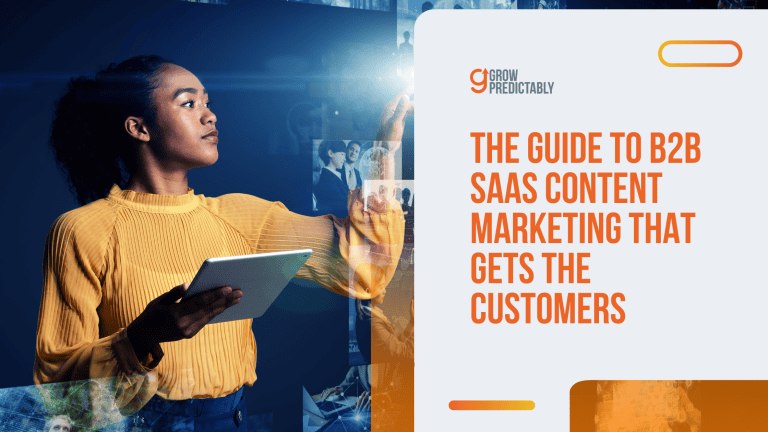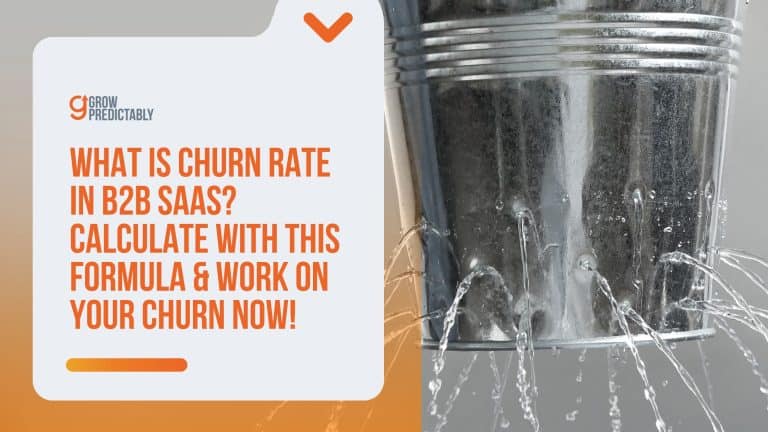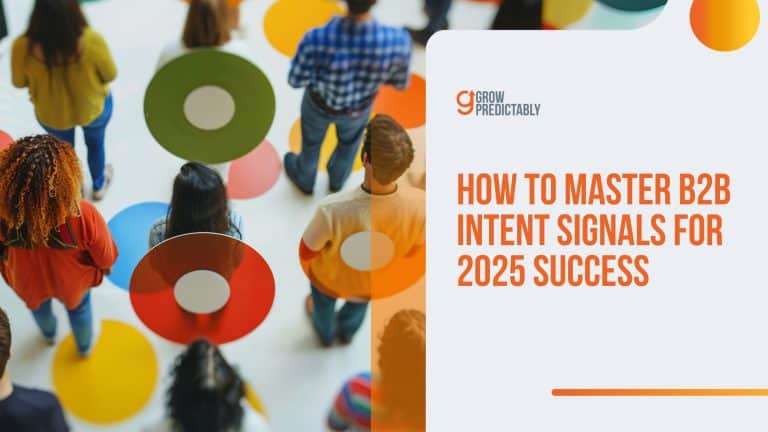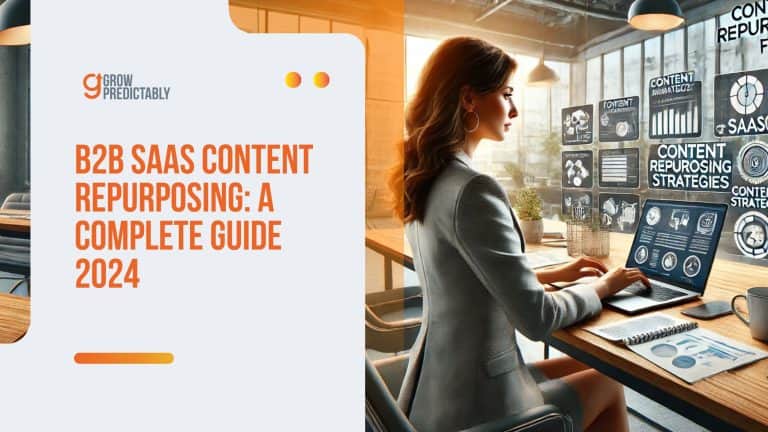The Essential Blueprint for a High-Performance Lead Generation Engine
Leads are coming in, but your pipeline still feels… empty.
Why?
Because a lead generation engine isn’t just about volume—it’s about attracting the right leads.
Most businesses fixate on traffic, ads, and cold outreach.
But the real game-changer?
A powerful lead generation engine that does the heavy lifting for you.
We’re unpacking five must-know optimization steps that most overlook.
The question is—are you making these same mistakes?
Let’s find out.
What is Lead Generation

Lead generation is the process of finding and attracting potential customers for your business.
Think of it as generating leads to fill your business pipeline with people who might want to buy what you’re selling.
A recent study shows that 76% of companies say their top priority is getting more leads, and for good reason – without new leads, businesses can’t grow.
The Fundamental Mechanics of Lead Generation
Lead generation works by getting people interested in your product or service and collecting their contact information.
It’s like building a list of people who raise their hand and say, “I’m interested in learning more.”
You collect this information through forms, phone calls, emails, or any way someone can reach out to your business, focusing on capturing leads effectively.
Data shows that 61% of businesses struggle most with getting quality leads – meaning it’s not just about getting any leads but the right ones.
Types of Leads That Matter
Different leads are at different stages in their buying journey.
Understanding these types helps you approach each lead the right way:
- Marketing Qualified Leads (MQLs): People who’ve shown interest through marketing activities like downloading content or signing up for newsletters.
- Sales Qualified Leads (SQLs): People who are ready to talk to sales and have shown clear buying intent.
- Product Qualified Leads (PQLs): People who’ve used your product (like a free trial) and shown signs they might become paying customers.
- Information Qualified Leads (IQLs): People who’ve given you their basic information but need more nurturing.
- Service Qualified Leads: Current customers who might want to upgrade or buy more services.
This organization helps your team know exactly how to handle each lead.
Ways to Generate Leads
There are many ways to generate leads, and the best approach often combines several methods, including various lead generation tools.
These tools, such as lead capture forms, chatbots, and automation software, help capture and manage leads effectively.
Here are the most effective ways:
- Your Website: Making it easy for visitors to contact you
- Social Media: Sharing helpful content and engaging with potential customers
- Email Marketing: Sending valuable information to interested people
- Content: Creating helpful blogs, videos, or guides
- Paid Advertising: Running targeted ads on Google or social media
- Word of Mouth: Getting referrals from happy customers
- Events: Meeting potential customers at trade shows or online events
Measuring Your Results
You need to track how well your lead generation is working.
Companies that track their leads regularly see a 25% increase in sales.
Here are the basic numbers to watch:
- How much you spend to get each lead (Cost per Lead)
- How many leads become customers (Conversion Rate)
- How many leads are vetted by the sales team and deemed ready for direct engagement (Sales Qualified Lead)
- How long it takes for leads to become customers (Sales Cycle Length)
- How much money each customer spends (Customer Value)
- Which lead sources bring the best customers (Source Attribution)
This helps you understand what’s working and what needs improvement.
Start with these basics and adjust your approach based on what the numbers tell you.
Why Building a Lead Generation Engine is Important for Your Business
Every business needs a steady flow of new customers to grow.
But waiting for customers to find you isn’t a strategy – it’s a gamble.
Your business needs a system that consistently brings in potential customers, not just random spikes of interest.
This is where lead generation services come into play.
These specialized offerings, which include targeted marketing campaigns, content creation, and data analytics, help attract and convert potential customers, ensuring sustained business growth.
It Makes Your Revenue Predictable
Random sales are dangerous for your business.
A proper lead generation system helps you predict and plan your growth.
Here’s what happens when you build this system:
- You know how many leads you’ll get each month
- You can calculate how many will become customers
- You can predict your monthly revenue
- You can plan your team and resource needs ahead
- You spend less time worrying about where your next customer will come from
Businesses with predictable lead generation report 32% higher revenue growth than those relying on ad-hoc methods.
It Saves You Money in the Long Run
Getting new customers doesn’t have to drain your bank account.
A good lead generation system actually saves you money.
Companies with effective lead generation spend 61% less per customer acquisition.
This happens because:
- You focus on people actually interested in buying
- You stop wasting money on random advertising
- Your sales team talks to qualified leads, not tire kickers
- Your marketing becomes more targeted and efficient
- You can repeat what works and cut what doesn’t
It Gives You Control Over Your Growth
Growing your business becomes a choice, not a chance event.
With a lead generation engine:
- You can turn up lead flow when you want to grow
- You can slow it down when you’re at capacity
- You control which types of customers you attract
- You can test new markets without big risks
- You know exactly what’s working and what isn’t
It Makes Your Business More Valuable
A business that can consistently generate leads is worth more.
Companies with systematic lead generation are valued 48% higher than their competitors.
Here’s why:
- Buyers pay more for predictable revenue
- Your business doesn’t depend on any single customer
- You have data to prove your growth potential
- Your marketing and sales process can be repeated
- Your business can run without you
It Keeps You Ahead of Competition
In today’s market, waiting for customers isn’t an option.
Your competitors are actively looking for leads – and they’re probably trying to reach your customers too.
71% of companies increased their lead generation budget in the last year.
A strong lead generation engine:
- Helps you stay visible in your market
- Builds relationships before competitors do
- Keeps your sales pipeline full
- Makes your business resilient to market changes
- Gives you data to spot market trends early
Building a lead generation engine isn’t just important – it’s essential for any business that wants to grow consistently and profitably.
Start small, measure what works, and keep improving your system.
6 Steps to Build a High-Performance Lead Gen Engine
Your lead generation engine determines your business’s growth potential.
Companies with optimized lead generation processes generate 133% more revenue than those without structured systems.
Whether you’re starting from scratch or improving your current process, these six steps will help you build a system that consistently brings in quality leads.
1. Know Your Ideal Customer
Before you spend a single dollar on marketing, you need to know exactly who you’re trying to reach.
Businesses that clearly define their ideal customer profile see a 68% higher win rate.
This step involves deep research into your best current customers and market opportunities.
Understanding your ideal customer isn’t just about basic demographics – it’s about getting into their mindset.
Key areas to research and document:
- Their daily challenges and pain points
- Their buying process and decision-making criteria
- Their budget range and purchasing authority
- Where they search for information
- What solutions they’ve tried before
- Who influences their decisions
- Their success metrics and goals
- Their communication preferences
- Their industry-specific requirements
- Their typical objections
This detailed understanding shapes everything from your marketing messages to your product development.
Talk to your current customers, conduct surveys, and analyze your customer service interactions to build these profiles.
2. Build Your Strategy
A strategy without a plan is just a wish. Your lead generation strategy needs concrete steps and clear goals.
Marketing teams that align their strategy with customer behavior generate 73% more leads.
A comprehensive strategy should cover:
Channel Selection and Prioritization:
- Primary channels (where most of your audience spends time)
- Secondary channels (supporting touchpoints)
- Emerging channels (potential future opportunities)
- Channel-specific content strategies
- Cross-channel integration plans
Resource Allocation:
- Budget breakdown by channel
- Team responsibilities and roles
- Technology and tool requirements
- Content creation resources
- Training and skill development needs
Timeline and Milestones:
- Short-term goals (30-90 days)
- Medium-term objectives (3-6 months)
- Long-term targets (6-12 months)
- Key performance indicators (KPIs)
- Review and adjustment periods
3. Create Value
Value creation is the foundation of effective lead generation.
Content that educates generates 3x more leads than promotional content.
Your content and offers should solve real problems and demonstrate your expertise.
Types of Value-Based Content:
- Detailed how-to guides and tutorials
- Industry research and reports
- Templates and tools
- Video training series
- Interactive assessments
- Case studies and success stories
- Expert interviews and insights
- Checklists and frameworks
- Webinars and workshops
- Free trials or samples
Each piece of content should have a clear purpose in your lead generation funnel.
Map content to different stages of the buyer’s journey and ensure it guides prospects toward your solution.
4. Set Up Your Capture System

Your lead capture system needs to be frictionless and professional.
Companies with optimized lead capture forms see 42% higher conversion rates.
Think of this as building a bridge between your valuable content and your potential customers.
The easier it is to cross, the more leads you’ll collect.
Essential Components of Your Capture System:
- Form design and placement
- Data collection fields
- Privacy compliance measures
- Thank you pages and messages
- Confirmation emails
- Lead magnet delivery system
- CRM integration points
- Follow-up automation sequences
- Mobile responsiveness
- Loading speed optimization
Technical Implementation Requirements:
- Form building software
- Email marketing platform
- CRM system
- Analytics tools
- Landing page builder
- Security certificates
- API integrations
- Backup systems
- Testing tools
- Monitoring solutions
5. Score and Qualify Leads
Lead scoring transforms random contacts into organized opportunities.
Companies that use lead scoring see a 77% lead generation ROI increase.
This systematic approach helps you focus on leads most likely to convert, saving time and resources.
Scoring Criteria Categories:
Demographic Information
- Company size
- Industry type
- Geographic location
- Budget range
- Decision-making authority
Behavioral Signals
- Website visits
- Content downloads
- Email engagement
- Social media interaction
- Form submissions
- Webinar attendance
- Free trial usage
- Product page views
Qualification Process Steps:
- Initial scoring setup
- Behavior tracking implementation
- Lead nurturing workflows
- Sales team alignment
- Regular score adjustments
- Automated notifications
- Follow-up triggers
- Conversion tracking
- Performance analysis
- System optimization
6. Track and Optimize
Measurement isn’t just about collecting data – it’s about making informed decisions.
Businesses that regularly track lead metrics grow 3.5x faster.
Your tracking system should give you clear insights into what’s working and what needs improvement.
Essential Metrics to Monitor:
Lead Generation Metrics
- Total leads generated
- Lead source performance
- Cost per lead
- Lead quality score
- Channel conversion rates
Sales Impact Metrics
- Lead-to-opportunity ratio
- Sales cycle length
- Close rate by lead source
- Average deal size
- Customer lifetime value
ROI Measurements
- Marketing spend efficiency
- Channel ROI comparison
- Content performance metrics
- Campaign effectiveness
- Overall system ROI
Optimization Process:
- Weekly metric reviews
- Monthly performance analysis
- Quarterly strategy adjustments
- A/B testing schedule
- Budget reallocation plans
- Team performance reviews
- Technology stack assessment
- Process improvement cycles
- Competitive analysis
- Market trend adaptation
Remember: Building a high-performance lead generation engine is an ongoing process.
Start with these fundamentals, but continuously refine and improve based on your specific business needs and market response.
Document everything, test regularly, and stay focused on providing value to your ideal customers.
Choosing the Right Tools and Software
Your tech stack forms the backbone of your lead generation efforts.
Companies using lead generation software see a 451% increase in qualified leads, but choosing the wrong tools can drain your budget and demotivate your team.
A well-chosen lead generation tool is essential for efficiently capturing and managing leads, with features like contact forms, landing page builders, and CRM integration to streamline the process and prioritize leads based on their conversion potential.
67% of companies waste up to one-third of their software budget on unused or underutilized tools.
Let’s build a tech stack that actually drives results.
Understanding Lead Generation Software
Lead generation software is more than just a set of digital tools – it’s your 24/7 lead-generating machine.
These platforms automate and streamline the entire process of finding, engaging, and converting potential customers.
Businesses using automation generate 2x more leads than those using manual methods.
The right software stack can handle everything from the moment a visitor lands on your website to the point they become a qualified lead.
Core Functions and Their Impact:
- Lead Capture and Form Building
- Dynamic forms that adapt to user behavior
- Progressive profiling to gather information gradually
- Smart fields that remember returning visitors
- Mobile-responsive design capabilities
- Custom validation rules
- A/B testing capabilities for form elements
- Integration with CRM systems
- GDPR and compliance features
- Email Marketing Automation
- Behavior-triggered email sequences
- Personalization at scale
- Segmentation capabilities
- Email deliverability optimization
- Open and click tracking
- List management and cleaning
- Split testing features
- Revenue attribution tracking
- CRM Functionality
- Contact record management
- Deal pipeline tracking
- Task automation
- Team collaboration tools
- Custom fields and properties
- Reporting and forecasting
- Mobile access
- Integration capabilities
- Analytics and Tracking
- Real-time visitor tracking
- Conversion path analysis
- Source attribution
- Custom report builders
- Goal tracking
- ROI calculation
- Heat mapping
- User journey mapping
Essential Tools for Every Budget
Budget constraints shouldn’t limit your lead generation capabilities.
The key is choosing tools that provide the best value for your current stage.
Companies that carefully select budget-appropriate tools see 37% better ROI.
Here’s a comprehensive breakdown of what you need at each level.
Entry-Level Tools (Under $100/month):
- Basic CRM Systems:
HubSpot CRM Free (Up to 1M contacts)
- Contact and deal management
- Email tracking and notifications
- Meeting scheduling
- Basic reporting
- Gmail and Outlook integration
Email Marketing Platforms:
MailerLite (Up to 1,000 subscribers)
- Drag-and-drop editor
- Landing page builder
- Automation workflows
- A/B testing
- Detailed analytics
- Form Builders:
- Google Forms (Free)
- TypeForm (Basic plan)
- Custom branding
- Logic jumps
- Basic integrations
- Mobile optimization
- Implementation Strategy for Entry-Level Tools:
- Start with one tool in each category
- Focus on mastering core features
- Create standard operating procedures
- Train team members thoroughly
- Monitor usage and results
Mid-Range Solutions ($100-500/month):
- Advanced CRM Features:
- Pipedrive Professional
- Sales automation
- Custom fields
- Revenue forecasting
- Team collaboration tools
- Advanced reporting
- Pipedrive Professional
- Marketing Automation:
- ActiveCampaign Plus
- Site tracking
- Custom automation flows
- Lead scoring
- SMS marketing
- CRM integration
- ActiveCampaign Plus
- Analytics Tools:
- Mixpanel Growth
- User behavior analysis
- Custom event tracking
- Funnel analysis
- Retention metrics
- A/B testing capabilities
- Mixpanel Growth
Enterprise Solutions ($500+/month):
- Full Marketing Suites:
- HubSpot Marketing Hub Enterprise
- Multi-touch revenue attribution
- Advanced automation workflows
- Custom objects
- Predictive lead scoring
- API access
- Dedicated support
- HubSpot Marketing Hub Enterprise
- Advanced Analytics:
- Salesforce Pardot
- Account-based marketing
- AI-powered insights
- Custom reporting
- Advanced segmentation
- Enterprise security
- Salesforce Pardot
Choosing the Right Stack
Selecting tools isn’t just about features – it’s about finding solutions that align with your business processes.
82% of failed software implementations are due to poor tool selection processes.
Let’s break down the evaluation process.
Technical Considerations:
- API documentation quality
- Integration capabilities
- Data migration tools
- Security certifications
- Uptime guarantees
- Mobile accessibility
- Scalability options
- Backup systems
Business Alignment:
- Growth potential
- Cost vs. benefit analysis
- Team learning curve
- Implementation timeline
- Support availability
- Contract flexibility
- Customization options
- Compliance requirements
Popular Tool Categories and Examples
Each tool category serves a specific purpose in your lead generation ecosystem.
Utilizing top lead generation tools is crucial for enhancing visitor identification and lead qualification processes.
Let’s examine the top performers in each category and understand how they fit into your strategy.
Companies using integrated tool stacks generate 38% more leads.
CRM Systems Deep Dive:
HubSpot CRM:
- Best for: Growing businesses needing scalability
- Key Features:
- Visual deal pipeline
- Email tracking and templates
- Meeting scheduler
- Live chat integration
- Custom properties
- Mobile app
- Price Range: Free – $3,200/month
- Implementation Timeline: 2-8 weeks
Salesforce:
- Best for: Enterprise-level organizations
- Key Features:
- Advanced automation
- AI-powered insights
- Custom reporting
- Territory management
- Advanced security
- Price Range: $25 – $300/user/month
- Implementation Timeline: 3-6 months
Email Marketing Platforms:
ActiveCampaign:
- Best for: Sophisticated automation needs
- Key Features:
- Predictive sending
- Split testing
- Dynamic content
- Sales automation
- Website personalization
- Revenue attribution
- Price Range: $29 – $259/month
- Implementation Timeline: 1-4 weeks
Lead Capture Tools:
Unbounce:
- Best for: Advanced landing page testing
- Key Features:
- AI-powered optimization
- Dynamic text replacement
- AMP pages
- Popup builders
- A/B testing suite
- Price Range: $80 – $300/month
- Integration Capabilities:
- CRM systems
- Email platforms
- Analytics tools
- Payment processors
Implementation Strategy Framework:
- Phase 1: Foundation (Weeks 1-2)
- Tool audit and gap analysis
- Team capability assessment
- Implementation roadmap
- Basic setup and configuration
- Core team training
- Phase 2: Integration (Weeks 3-4)
- Data migration
- Custom field mapping
- Workflow setup
- Integration testing
- Advanced feature activation
- Phase 3: Optimization (Weeks 5-8)
- Process documentation
- Team training completion
- Automation setup
- Performance monitoring
- Feedback collection
Success Metrics to Track:
- Adoption Metrics:
- Daily active users
- Feature utilization
- Training completion rates
- Support ticket volume
- User satisfaction scores
- Performance Metrics:
- Lead generation increase
- Conversion rate improvement
- Time saved per task
- Cost per lead reduction
- ROI measurement
Maintenance Best Practices:
- Regular System Health Checks:– Monthly data cleanup
- Quarterly workflow review
- Semi-annual integration testing
- Annual security audit
- Bi-annual training refreshers
Pro Tips for Long-term Success:
- Document all processes and customizations
- Create internal champions for each tool
- Schedule regular optimization reviews
- Keep training materials updated
- Monitor industry trends for new solutions
- Maintain vendor relationships
- Plan for scalability
- Budget for upgrades
- Track ROI consistently
Remember: The success of your tool stack depends not just on the tools themselves but on how well they’re implemented and maintained.
Start with a solid foundation, train your team thoroughly, and continuously optimize based on performance data.
Implementing a Lead Generation Funnel
A lead generation funnel turns strangers into paying customers through a systematic process.
Companies with structured funnels convert 4x more leads than those with random marketing efforts.
Engaging website visitors is crucial in this process.
Using lead capture forms and visitor identification tools, you can collect valuable information from website visitors and analyze their behavior to improve conversion rates.
It’s not just about getting leads – it’s about guiding them through a journey that makes them want to buy.
Understanding the Funnel Stages
Every successful funnel has distinct stages that move prospects closer to a purchase.
Businesses that clearly define their funnel stages see 73% higher conversion rates.
Let’s break down each stage and what happens in it.
Top of Funnel (Awareness):
- Blog posts and articles
- Social media content
- YouTube videos
- Podcasts
- Infographics
- Educational webinars
- Industry reports
- SEO-optimized content
- Guest appearances
- Paid advertising
Goal: Attract attention and build awareness about the problem you solve.
Middle of Funnel (Consideration):
- Detailed guides
- Case studies
- Email newsletters
- Comparison guides
- Expert interviews
- Product demos
- Free tools
- Worksheets
- Industry-specific content
- Solution-focused webinars
Goal: Educate prospects about possible solutions and position your offering.
Bottom of Funnel (Decision):
- Free trials
- Consultations
- Product demonstrations
- Customer testimonials
- ROI calculators
- Pricing comparisons
- Implementation guides
- Guarantee information
- Direct sales outreach
- Limited-time offers
Goal: Convert interested prospects into customers.
Building Your Funnel Infrastructure
Your funnel needs the right technology and processes to work efficiently.
Marketing automation increases qualified leads by 451%.
Essential Components:
- Landing pages for each offer
- Email automation sequences
- Lead scoring system
- CRM integration
- Analytics tracking
- Content delivery system
- Follow-up processes
- Lead nurturing workflows
- Sales handoff protocols
- Performance tracking
Content Mapping and Creation
Match your content to each stage of the buyer’s journey.
Content aligned with buyer stages converts 72% better.
Content Planning Framework:
- Awareness Stage Content:
- Educational blog posts
- How-to videos
- Industry trends
- Problem-focused content
- Basic guides
- Consideration Stage Content:
- Detailed solutions
- Comparison guides
- Expert insights
- Case studies
- Implementation guides
- Decision Stage Content:
- Product features
- Pricing guides
- ROI calculations
- Customer success stories
- Technical specifications
Optimization and Testing
Your funnel needs constant refinement to perform at its best.
Regular funnel optimization increases conversion rates by 53%.
Key Areas to Test:
- Landing page elements
- Call-to-action buttons
- Form fields
- Email subject lines
- Content offers
- Timing of follow-ups
- Lead scoring criteria
- Nurturing sequences
- Sales handoff points
- Conversion triggers
Testing Schedule:
- Weekly metrics review
- Monthly A/B tests
- Quarterly content audits
- Semi-annual funnel review
- Annual strategy update
Measuring Funnel Performance
Track these metrics to ensure your funnel is performing optimally:
Top of Funnel Metrics:
- Traffic sources
- Engagement rates
- Content performance
- Social sharing
- Ad performance
Middle of Funnel Metrics:
- Email open rates
- Content downloads
- Webinar attendance
- Lead quality scores
- Nurturing effectiveness
Bottom of Funnel Metrics:
- Conversion rates
- Sales qualified leads
- Close rates
- Deal size
- Revenue generated
Remember: A successful funnel is never “finished.” Keep testing, measuring, and improving based on data and customer feedback.
Start with the basics and add complexity as you learn what works for your audience.
FAQs
The Road to Sustainable Growth
Lead generation is more than just collecting contacts—it’s about building meaningful relationships with potential customers.
Throughout this article, we’ve explored the importance of attracting the right leads, qualifying them effectively, and nurturing them through strategic follow-ups.
You can create a system that fuels consistent business growth by aligning your efforts with smart KPIs and leveraging automation.
But here’s the exciting part: this isn’t just theory—it’s a proven framework designed to help you succeed.
Imagine a steady flow of high-quality leads who are genuinely interested in your offering.
That’s within your reach if you apply these strategies deliberately.
Now, it’s your turn.
Start by implementing just one tactic from this guide, whether it’s refining your lead magnet, optimizing your landing pages, or setting up your Growth Scorecard.
Need more guidance?
Explore our in-depth guides on email marketing automation and advanced lead scoring techniques.
What’s the biggest challenge you’re currently facing in your lead generation process?
Share your thoughts in the comments—we’d love to help!



